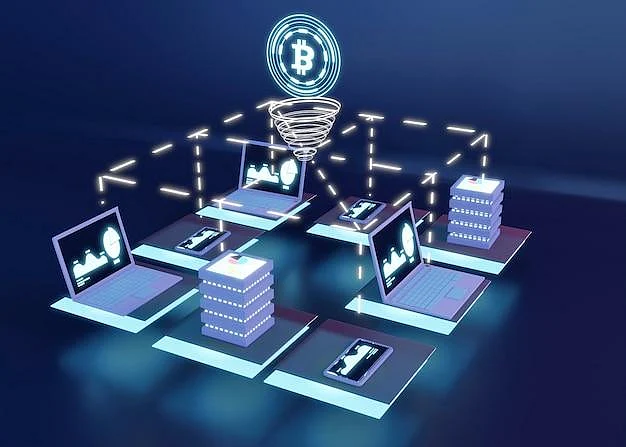One of the most radical changes since the rise of online banking, the financial world is adopting a new model wherein physical or paper-based assets are being turned into digital tokens. Asset tokenization is the name given to this innovation that is silently changing how value is created, traded, and managed in traditional markets.
In simple words, tokenization of assets involves the process whereby rights or ownership of a physical or financial asset are digitized into a token that exists on the blockchain or distributed ledger. Real estate, stocks, bonds, even art, carbon credits, or intellectual property-the list of what such tokens can represent is almost endless. The combination of transparency brought about by blockchain and security due to smart contracts creates a bridge between traditional finance, or TradFi, and the rapidly developing world of decentralized finance, or DeFi.
Traditional markets restrict access to assets such as real estate, venture capital, or fine art to institutional or high-net-worth investors. Tokenization breaks the exclusivity by offering fractional ownership, enabling everyone to invest in an asset. It creates a system that could be even more inclusive, efficient, and liquid.
This paper analyzes how asset tokenization is going to change the future of traditional capital markets by considering mechanisms, impacts, benefits, and challenges. It also looks ahead at what a tokenized financial ecosystem could mean for investors, institutions, and regulators.
What is asset tokenization?
Definition and Core Concept
Asset tokenization is, in general, the process of digitally representing a real-world asset on a blockchain. In other words, it is like converting some valuable asset ownership-a property or a share of a company, for example-into a digital token, which one can then easily transfer, divide, or trade.
Each token represents a fraction or the entirety of the asset and has the rights encoded within smart contracts — self-executing pieces of code that automatically enforce the rules of ownership, transfer, and distribution.
For example:
One can divide a building valued at ₹100 crore into 10 lakh digital tokens, with each token representing ₹1,000 of ownership.
These tokens can be bought, sold, or traded by investors globally, many times in real time.
This technology utilizes the immutability, transparency, and security of blockchain in ensuring that ownership records are verifiable and tamper-proof.
Types of Tokenized Assets
RWAs: Real-World Assets are tangible items, like real estate, gold, art, or vehicles.
Financial Instruments: Stocks, bonds, mutual funds, private equity, and derivatives.
Intangible Assets: Patents, copyrights, royalties, carbon credits, and digital art.
Why It Matters
Unlike simple digitalization, tokenization introduces programmability-meaning asset management and compliance can be automated through smart contracts. It has the potential to reduce administrative costs, minimize fraud, and enable near-instant settlements.
Tokenization, therefore, is more than just a technological upgrade; it's a structural evolution in the creation, ownership, and trading of assets.
Key Drivers Reshaping Traditional Markets
Asset tokenization changes the way traditional markets function by introducing better liquidity, accessibility, efficiency, and transparency. The driving forces for such a paradigm shift and redefining of financial inclusion across sectors are as follows.
1. Demand for Greater Liquidity
Traditional markets usually contain the types of illiquid assets that take months to sell, such as real estate, art, or private equity. Tokenization overcomes this because it can divide the asset into millions of digital tokens and allow investors to buy or sell fractions with relative ease. This opens up the possibility of trading in previously hard-to-liquidate assets, thus enabling faster liquidation and easier movement of capital. This, over time, will unlock frozen value and make financial markets more responsive to investor needs.
2. Democratization and Accessibility
Earlier, investing in premium assets was reserved for the rich and wealthy. Tokenization breaks down these barriers to include fractional ownership, enabling any amount of investment in a piece of property, artwork, or startup. This, in turn, includes retail investors and opens up access globally; someone located in India could invest in European assets with ease. In this way, tokenization advances financial inclusion and equality in wealth creation.
3. Technological Efficiency
Traditional finance involves a number of intermediaries that increase cost and time, while brokers, banks, and clearing houses are some of the participants in tokenization. Simplifying these processes on blockchain with the use of smart contracts will, therefore, involve automation of verification, keeping records, and ownership transfer. This not only speeds up settlements but also reduces human error and operational costs, thus making the financial system quicker, more transparent, and efficient.
4. Access to a global market 24/7
Whereas traditional exchanges operate on fixed hours, tokenized markets operate around the clock. Investors could trade anywhere, anytime, without waiting for open bells or market holidays. In that respect, the accessibility of 24/7 aligns with the digital economy to enable global participation and continuous liquidity, breaking traditional geographic and time zone barriers.
5. Transparency and Security
Due to blockchain, each transaction of a token is instantly recorded on an immutable ledger. This provides no room for tampering or manipulation, hence giving investors confidence. Tokenized systems provide far greater trust and security compared to many traditional models, thanks to clear recording of ownership, transparent audit trails, and solid cryptographic protection.
How Tokenization of Assets Changes Conventional Market Functions
1. Issuance and Capital Raising
Traditional issuance of shares or bonds involves banks, underwriters, and legal intermediaries-all heavy in cost and complexity. With tokenization:
Security token offerings, companies can issue tokens directly to investors.
Smart contracts automate the payment of dividends and ensure compliance.
Capital raising is quicker, cheaper, and more transparent.
A developer of real estate can tokenize a project to raise capital by selling tokens representing ownership stakes in that project to reach global investors without relying on local banks.
2. Trading and Secondary Markets
Trading tokenized assets is now faster and simpler than ever before. Transactions can now settle on-chain in mere minutes, not days, with no need to reconcile physically.
Tokenization platforms allow instant, peer-to-peer trading.
Real-time price discovery, wider market participation by investors.
Here, in this new market model, a hybrid ecosystem is introduced; regulated exchanges, as well as decentralized platforms, coexist in order to provide safety along with liquidity.
3. Settlement and Custody
In finance, traditional settlement cycles like T+2 or T+3 create counterparty risks. Due to atomic settlement, the ownership transfer and payment can occur simultaneously, which enables near-instant settlement of tokenized assets.
In addition, custody changes: digital wallets replace conventional custodians. Instead of keeping either paper certificates or centralized registries, blockchain itself acts as the ledger of truth.
4. Market Accessibility
Tokenization opens investor access anywhere. This global reach makes markets more inclusive and more interconnected, creating a shared digital economy.
Benefits of Asset Tokenization
Advantages | Explanation |
Fractional Ownership | Investors can buy smaller portions of high-value assets improving inclusivity. |
Liquidity Creation | Illiquid assets like property or fine art can be traded more easily. |
Faster Settlement | Blockchain enables near-instant transactions. |
Transparency | Immutable ledgers provide clear auditable records. |
Reduced Costs | Fewer intermediaries mean lower fees and operational costs. |
Explained in Detail
Fractional Ownership: Tokenization allows investors to hold micro-stakes in assets that were once beyond reach, such as luxury real estate or fine art.
Increased Liquidity: The ability to trade small fractions opens new secondary markets and enhances price discovery.
Efficiency Gains: Automation reduces manual paperwork and eliminates errors in clearing and settlement.
Programmable Features: Smart contracts embed rights like interest payments, collateral rules, or redemption terms directly into tokens.
Transparency: Every transaction is recorded on an immutable ledger, ensuring auditability and compliance.
Challenges and Limitations
While promising, tokenization is still in its infancy and faces several practical hurdles.
1. Regulatory Uncertainty
Each jurisdiction defines tokenized assets differently — some treat them as securities, others as commodities. This lack of consistency complicates compliance, cross-border transactions, and investor protection.
2. Technological Risks
Smart contract bugs, cyberattacks, and private key mismanagement can compromise token security. These require robust auditing, secure wallets, and risk-management systems.
3. Market Fragmentation
Different platforms and blockchains use incompatible standards (ERC-20, ERC-1400, etc.), leading to interoperability challenges. Until universal frameworks emerge, liquidity remains scattered.
4. Liquidity Illusion
Not every tokenized asset is actively traded. Some may remain illiquid despite being fractionalized, especially if investor demand is low.
5. Custody and Governance Issues
Questions remain: who owns the underlying asset if the token is lost or hacked? How are disputes resolved? Legal clarity around custodial rights is still evolving.
Comparison: Traditional Market vs. Tokenized Model
Aspect | Traditional Finance (TradFi) | Tokenized Asset Market |
Ownership | Centralized records held by custodians | Decentralized ownership stored on blockchain |
Accessibility | Restricted to qualified investors | Open to global and retail investors |
Settlement Time | 2–3 business days | Near-instant (minutes) |
Transparency | Limited dependent on intermediaries | Full auditable on-chain record |
Intermediaries | Multiple (banks clearing houses) | Few to none (peer-to-peer) |
This table highlights the paradigm shift from a centralized, fragmented, and high-cost system to a digital, open, and efficient financial architecture.
Real-World Applications of Asset Tokenization
1. Real Estate
Real estate tokenization allows partial ownership of high-value properties. Investors can purchase tokens representing shares of a building and receive proportional rental income. This process democratizes real-estate investing and enables easier resale of ownership stakes.
2. Private Equity and Venture Capital
Tokenization simplifies the process of investing in startups or private companies. It offers liquidity to traditionally long-term investments, allowing investors to exit earlier through secondary markets.
3. Art and Collectibles
Platforms are now tokenizing fine art, music royalties, and collectibles. These tokens represent shared ownership, making luxury assets available to everyday investors.
4. Bonds and Fixed Income
Governments and corporations are experimenting with tokenized bonds, which reduce issuance costs and settlement times. For instance, some central banks have piloted tokenized government securities for faster interbank settlements.
5. Commodities and Carbon Credits
Tokenizing commodities such as gold or oil allows investors to hold and trade them digitally without physical delivery. Similarly, carbon-credit tokenization supports transparent and traceable environmental markets.
Implications for Stakeholders
For Investors
Access to diverse, previously restricted assets.
Potential for higher liquidity and faster settlement.
Lower investment minimums and broader diversification.
However, new risks like cyber threats and unclear regulations persist.
For Issuers
Faster fundraising via global token sales.
Reduced dependency on intermediaries.
Automated dividend and compliance management.
Need for legal due diligence and robust smart contract audits.
For Financial Institutions
Banks and custodians must evolve into digital asset service providers.
Exchanges may launch hybrid systems supporting both traditional and tokenized assets.
Regulators must adapt frameworks for token issuance and investor protection.
Future Outlook: The Road Ahead
The tokenization trend is set to accelerate. Major banks, exchanges, and governments are testing blockchain-based settlement systems. Analysts predict that by 2030, up to $10 trillion worth of assets could be tokenized across real estate, private equity, and bonds.
Upcoming developments include:
Regulatory clarity through global collaboration.
Institutional adoption of blockchain-based securities.
Interoperable standards enabling cross-platform trading.
Integration with DeFi, where tokenized assets can serve as collateral or yield-generating instruments.
Emergence of 24/7 token exchanges operating under regulated environments.
Ultimately, tokenization may lead to a hybrid financial future, where traditional markets and blockchain ecosystems coexist seamlessly — combining the trust of regulation with the efficiency of decentralization.
Conclusion
Asset tokenization is more than a trend — it represents a foundational shift in global finance. By converting physical and financial assets into blockchain-based tokens, it introduces efficiency, inclusivity, and transparency into markets long dominated by intermediaries.
This transformation is not without challenges — especially around regulation, technology, and interoperability — but its long-term potential is undeniable. It can unlock trillions in previously illiquid assets, foster financial inclusion, and redefine how investors and institutions interact with markets.
In the coming decade, as regulation catches up and technology matures, tokenization could become the backbone of the global financial system, merging the best of traditional finance with the innovation of blockchain.
Frequently Asked Questions (FAQs)
Q1. What types of assets can be tokenized?
Almost any asset with value — real estate, stocks, art, intellectual property, commodities, or bonds — can be tokenized using blockchain technology.
Q2. How does tokenization differ from traditional digitization?
Digitization converts physical documents into digital records, whereas tokenization converts ownership itself into a programmable digital asset on a blockchain.
Q3. Does tokenization guarantee liquidity?
No. While fractionalization enables potential liquidity, actual liquidity depends on trading demand, market participants, and regulatory approval.
Q4. Are tokenized assets safe?
They are as secure as the blockchain and smart contracts that govern them. However, investors must use secure wallets and rely on regulated platforms.
Q5. Is asset tokenization legal?
Legality depends on the jurisdiction and type of token. Some countries have established frameworks for security tokens, while others are still developing rules.

























